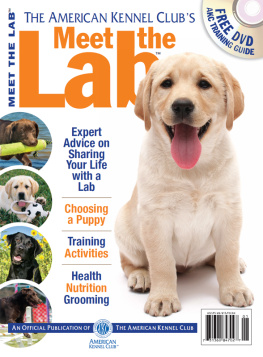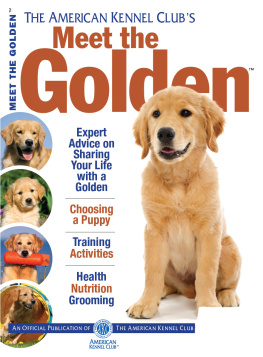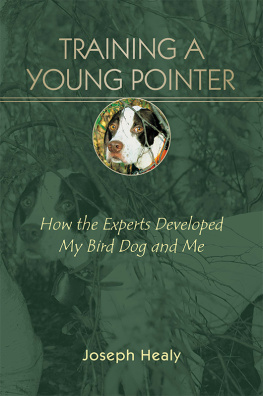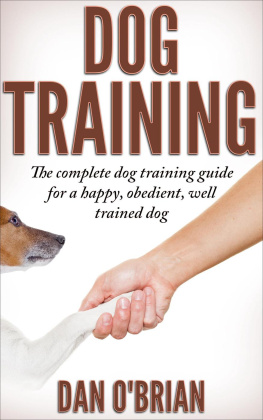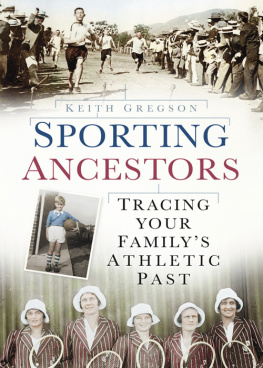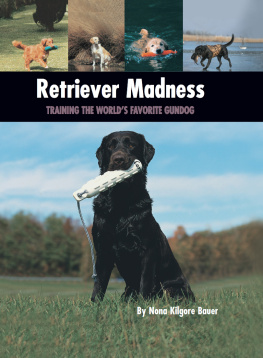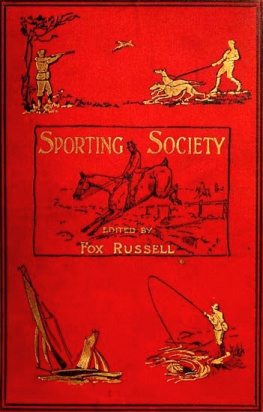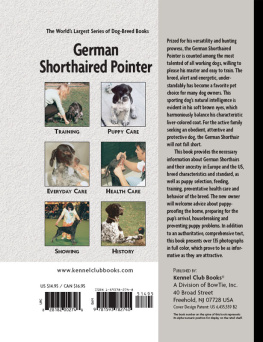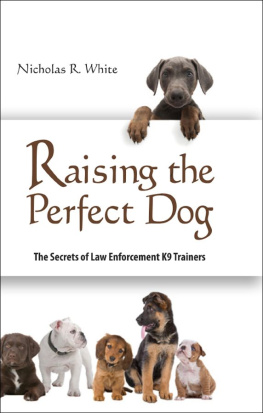
DOG TRAINING
BY J ASON S MITH

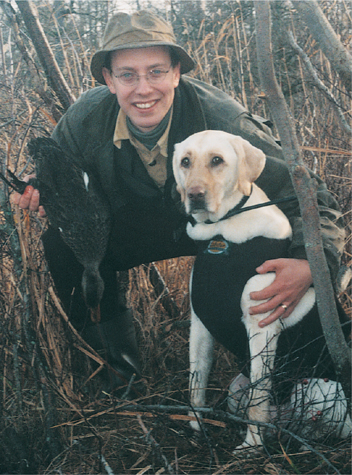
JASON SMITH is the editor of Just Labs magazine and the managing editor of The Retriever Journal and The Pointing Dog Journal. He has written 5 books and more than 100 articles on training hunting dogs. He holds degrees in wildlife sciences and management. Jason lives in Michigan with his wife, son and two dogsan English setter and a Labrador retriever.
D EDICATION
For Allie and Josie, and all the canine pals Ive shared a duck blind, grouse covert, pheasant field or a Sunday afternoon snooze with. The miles are always shorter when following a four-legged friend.
A CKNOWLEDGMENTS
Dog training is an ever-evolving process, and new equipment, theories, drills, and procedures seem to sprout up every year. And in almost every case, they move the art of dog training to where it should bethat of being a mutual communication between you and your dog and not an imposition of wills.
And it is todays professional trainers who are conveying this communication who deserve all of the credit. Yes, bloodlines of the different breeds have improved, and dogs are being produced that are healthier, and some would say smarter, than their predecessors. But getting into the canine brain and speaking their language in order to get these dogs to do some pretty amazing things is one of the outdoor worlds most impressive accomplishments.
Many thanks to all of the trainers and veterinarians who contributed valuable advice and pointers for this work: Dr. Jill Hyland Ayres, Dr. Rose Davidson, John and Amy Dahl, Butch Goodwin, Evan Graham, Charlie Jurney, James Keldsen, Dr. Kyle Kerstetter, Mike Lardy, Rick Smith, and Sharon Potter. Your accomplishments with dogs could fill volumes, and I thank you for taking the time out of your schedules to share your knowledge.
Id also like to thank my familymy wife Vickie, and my son Petefor putting up with me sitting in front of a computer while I finished this book. And thanks to Dad for not only doing a good edit on the first draft but also for showing me just how much more fun a hunt is when youre accompanied by a dog.
And thanks to Barbara Harold of CPi for all of her help in guiding this project through the production process. I truly had a wonderful time working with you.
Jason Smith
Traverse City, MI
2003

Copyright 2003, 2010 by Creative Publishing international, Inc.
400 First Avenue North, Suite 300
Minneapolis, MN 55401
1-800-328-3895
www.creativepub.com
All rights reserved.
President/CEO: Ken Fund
Executive Editor, Outdoor Group: Barbara Harold
Creative Director: Brad Springer
Project Manager: Tracy Stanley
Photo Editor: Angela Hartwell
Director, Production Services: Kim Gerber
Production Manager: Helga Thielen
Production Staff: Laura Hokkanen, Stephanie Barakos
Printed on American paper by: R. R. Donnelley
10 9 8 7 6 5 4 3 2 1
DOG TRAINING
by Jason Smith
Cover Photo: Dale C. Spartas, inset photo: Denver Bryan
Contributing Photographers: Denver Bryan, Alan & Sandy Carey, Daniel Dempster/Dembinsky Photo Assoc., Lon E. Lauber, Bill Marchel, Greg Meader, Sharon Potter, Mark Raycroft, John Schafer, Dusan Smetana, Dale C. Spartas, Ron Spomer
Contributing Illustrator: Chris Smith
Library of Congress Cataloging-in-Publication Data
Smith, Jason A.
Dog training / by Jason Smith.
p. cm. -- (The Complete hunter)
Includes index.
ISBN 1-58923-115-5
Digital ISBN: 978-1-61673-342-1
1. Dogs--Training. 2. Hunting dogs--Training. I. Title. II. Complete hunter (Creative Publishing International)
SF431.S614 2003
636.75--dc21
2003048597

Introduction
Dogs, like kids, can bring out all sorts of emotions in us as we train them for a specific task and raise them in our household as part of the family. From frustration to joy, disappointment to amazement, training a dogparticularly if its your first onecan be a roller coaster. Youll go through times when it seems as though nothing is getting through and all hope is lost; then, seemingly overnight, the dog will perform as if he understood you perfectly the entire timehe just finally decided to listen. Always keep in mind that no matter how poorly the dog may be reacting to a lesson, hell also have a lot of light-switch moments, when hell suddenly be listening and the light will magically turn on.
While this book is meant for everyone who decides to buy and train a pointing dog or retriever for hunting and for the family, it is geared toward the hunting dog owner, not the competitive dog owner. A competitive dog will need more specialized training than that described here, most likely one-on-one from a professional. This book is intended for the person who wants to train his or her own dog to hunt effectively and efficiently, keeping in mind that the best training method is that which will produce the qualities you desire in your dog.
People require different things of their dogs. This book will cover all of the basic and some of the advanced skills that every hunting retriever or pointing dog should know in order to be effective, efficient and a joy to hunt with. You may find over the course of your dogs life that he possesses skills he never uses except in training situations, or that hes deficient in skills necessary to make the hunt more complete. In the latter situation, youll find that its possible to teach an old dog new tricks. Your observations about your dog will become even more important when you take on that next young pup to trainyoull be more certain of the abilities you want your new dog to master.
Most importantlyand you should keep this fundamental fact in mind throughout the course of your trainingthe dog is a member of the family. This book will also help you welcome that new member into the household, where hell spend most of his lifeas a couch potato, or swimming with the kids, or going on an evening walk or sacking out with you as you watch the hockey game on ESPN. Allie, my 5-year-old English setter, spends more hours sprawled on our bed than she does pointing ruffed grouse or woodcock; and Josie, my 3-year-old Labrador retriever, follows me more from room to room of the house than to the duck blind.
But no matter how much time your dogs spend as well-adjusted (or maladjusted, depending on who you talk to) family members, they can sense the turn in the air when hunting season rolls around. And then those pieces of their genetic code, the pieces that are still wolf, begin to stir from their long spring and summer slumber and once again yearn to run free. Ill take a shotgun out of the closet in springtime to shoot some targets, and both dogs roll an eye toward me as though to say
Next page



